Micah: I enjoyed the pictures you provided throughout your blog especially your current applications. I also learned some new information from your blog as well!
Saturday, April 25, 2015
American Peer REviews
Alicia: Your blog really displayed a good understanding of the different styles of design from the American period I learned some new facts from the information you provided. Great job!
America
During this time France and the United States overthrew their monarchs during the same time which then lead these two countries to allie at the beginning of the 19th century. Neoclassicism design represented their political aspirations and the Declaration of Independence started the foundation of the American architecture and design. Benjamin Latrobe and Charles Bulfinsh were considered the fathers of American architecture. There were many designers from this time wight the first being Duncan Phyfe. He was a superb craftsman daybed being his specialties. He included the cornucopia leg, lyre motif, rolled back, and sofas rolled ends in his style.
One of his famous pieces of furniture was the Duncan Phyfe sofa. We can see here the characteristics of his work that were notes earlier in the blog.
Another influential man during this time was Lambert hitchcock. He was one of the first people to employ production-line methods. His characteristics of his design included black with gold paint, woven cane or rush seats, and stenciled designs of fruit, leaves, arrows, flowers, and eagles.
His famous chair was the hitchcock chai, which was seen in shaker styled homes of this time.

Shaker homes during this time included round barns built in the side of a hill entered at different levels. Elegant simplicity and superb craftsmanship. Cast iron stoves and ladder back chairs were also seen at this time and the ladder bad chairs were hung 6 feet from the floor in rows to hand them up.

This was a house including the shaker style and as we can see here this is how the chairs were hung.

Machine production also occurred during this time for competition of inferior furniture. It was for the new middle class which showed symbols of success and body comfort,(overstuffed furniture).
The American victorian style came about which had very large houses with many smaller rooms inside. Each room having a specific function, heaved drapery with dark interior and light exterior. Two staircases one for the public and one for the family. The coil spring was invented which made the proportions of furniture change. Black walnut and rosewood were incorporated with inlays of brass and mother of pearl.
John Belter made some of the most luxurious furniture from this time.

Here was a sofa he created and you can see detailed craftsmanship within the wood. It is just amazing.
Some current applications during this time were first this modern interior of a shaker home.

Another application would be this modern interior of a victorian home, we can see the design motifs fro this picture.

Below is a youtube clip provided about shaker styled homes:
https://www.youtube.com/watch?v=uwA9JoL4BxE
One of his famous pieces of furniture was the Duncan Phyfe sofa. We can see here the characteristics of his work that were notes earlier in the blog.
Another influential man during this time was Lambert hitchcock. He was one of the first people to employ production-line methods. His characteristics of his design included black with gold paint, woven cane or rush seats, and stenciled designs of fruit, leaves, arrows, flowers, and eagles.
His famous chair was the hitchcock chai, which was seen in shaker styled homes of this time.
Shaker homes during this time included round barns built in the side of a hill entered at different levels. Elegant simplicity and superb craftsmanship. Cast iron stoves and ladder back chairs were also seen at this time and the ladder bad chairs were hung 6 feet from the floor in rows to hand them up.
This was a house including the shaker style and as we can see here this is how the chairs were hung.
Machine production also occurred during this time for competition of inferior furniture. It was for the new middle class which showed symbols of success and body comfort,(overstuffed furniture).
The American victorian style came about which had very large houses with many smaller rooms inside. Each room having a specific function, heaved drapery with dark interior and light exterior. Two staircases one for the public and one for the family. The coil spring was invented which made the proportions of furniture change. Black walnut and rosewood were incorporated with inlays of brass and mother of pearl.
John Belter made some of the most luxurious furniture from this time.
Here was a sofa he created and you can see detailed craftsmanship within the wood. It is just amazing.
Some current applications during this time were first this modern interior of a shaker home.

Another application would be this modern interior of a victorian home, we can see the design motifs fro this picture.

Below is a youtube clip provided about shaker styled homes:
https://www.youtube.com/watch?v=uwA9JoL4BxE
Sunday, April 12, 2015
French Renaissance Peer Reviews
Mackenzie: your blog really displayed a lot of great images that displayed this eras style of design thoroughly! I really liked your choices of the modern applications they were great.
Nichole: you blog was very informative based on the great information you provided through the paragraphs. I really liked the different Chateau's you blogged about especially the Chateau d’Amboise in the Loire Valley.
Nichole: you blog was very informative based on the great information you provided through the paragraphs. I really liked the different Chateau's you blogged about especially the Chateau d’Amboise in the Loire Valley.
French Renaissance
The French Renaissance was a artistic and cultural movement between the 15th and 17th centuries. The period is paired with the pan-European Renaissance and includes the spread of humanism along with the incorporation of new artistic forms of printing, architecture, music, sculpturing, and painting. Also, new codes of sociability were introduced as well as codes of etiquette and discourse.
The French Renaissance lasted roughly between the French invasion of Italy in the year of 1494 to the reign of Charles VIII until the death of Henry IV in the year of 1610. The French word for Renaissance literally means "Rebirth" which is why this era was know as the era of rebirth for new design techniques. France followed the gothic style of design which included Large windows, high ceilings, rib vaults, and ornaments were incorporated throughout this era.
Here are some famous architectural sites during the French Renaissance:
Here is the Chateau de Chambord, which was one of the most well known Chateau's during this era.
Here is the Palais Ducal de Nevers:
Here is the Chateau de Fontainebleu:
Here are some current application of Design style of French Furniture :
Below here is a link to a short documentary on the French Renaissance:
https://www.youtube.com/watch?v=Bosu6_qw2W0
Tuesday, March 17, 2015
Spanish Renaissance peer reviews
Nichole: I really enjoyed reading your blog especially the video you provided. I was really able to receive a thorough understanding of the furniture displayed during this era.
Hailey: I really likes your blog because of all the informative picture you provided throughout the writing. The pictures displayed a great understanding of the architecture and furniture from this era.
Hailey: I really likes your blog because of all the informative picture you provided throughout the writing. The pictures displayed a great understanding of the architecture and furniture from this era.
Spanish Renaissance
The Italian Renaissance influenced the Spanish and the French. The fusion of christian spain with moorish art termed and the final expulsion of the moors was in 1607. There was a great loss to the handicrafts and commerce of southern spain after this happened. Also, the plateresco phase and the desornamentado phase began in this era. The baroque style and churrigueresco style of surface decoration were also brought out in this time frame in spain. Residential design was influenced by moorish design and there were numerous modest rural houses built. Interiors consisted of iron grills on windows, colored tiles, pine-paneled ceilings, and tile pictures. Spain was also a leading center for fine leather work. There was a lot of inlay work and carvings in bone, exotic woods, and mother of pearl. Inlay work was one of spain's finest artistic achievements.
One of the last spanish palaces that was completed before the expulsion of the moors was Alhambra, Granada 1354. This was a supreme achievement of moorish architecture and decoration. The exterior was plain and it had numerous courtyards with gardens, fountains, and reflecting pools.
.jpg)

.jpg)
Another beautiful place during this time was the Cathedral of seville. This cathedral was located in seville, andalusia spain. It was the largest cathedral in the world in the 15th century. The style was gothic and was larger than hagia sophia. This cathedral also demonstrated the cities wealth and included 80 chapels that required 500 masses daily.




Another huge site during this era was el escorial. It was 30 miles north west of spain in the 16th century. Its massive structure was known for its simplicity, sobriety, and plainness. It was a highly moral building and a royal palace for monarchy.



Furniture was bold and simple with heavy proportions. Walnut wood was common and silver was used for ornamentation. Rectangular shapes were preferred with crude carvings. One of the most famous chairs from this era was the sill on de frailero(monk's chair). It was a walnut armchair with a leather seat and back and a broad front stretcher with decorative nailheads.
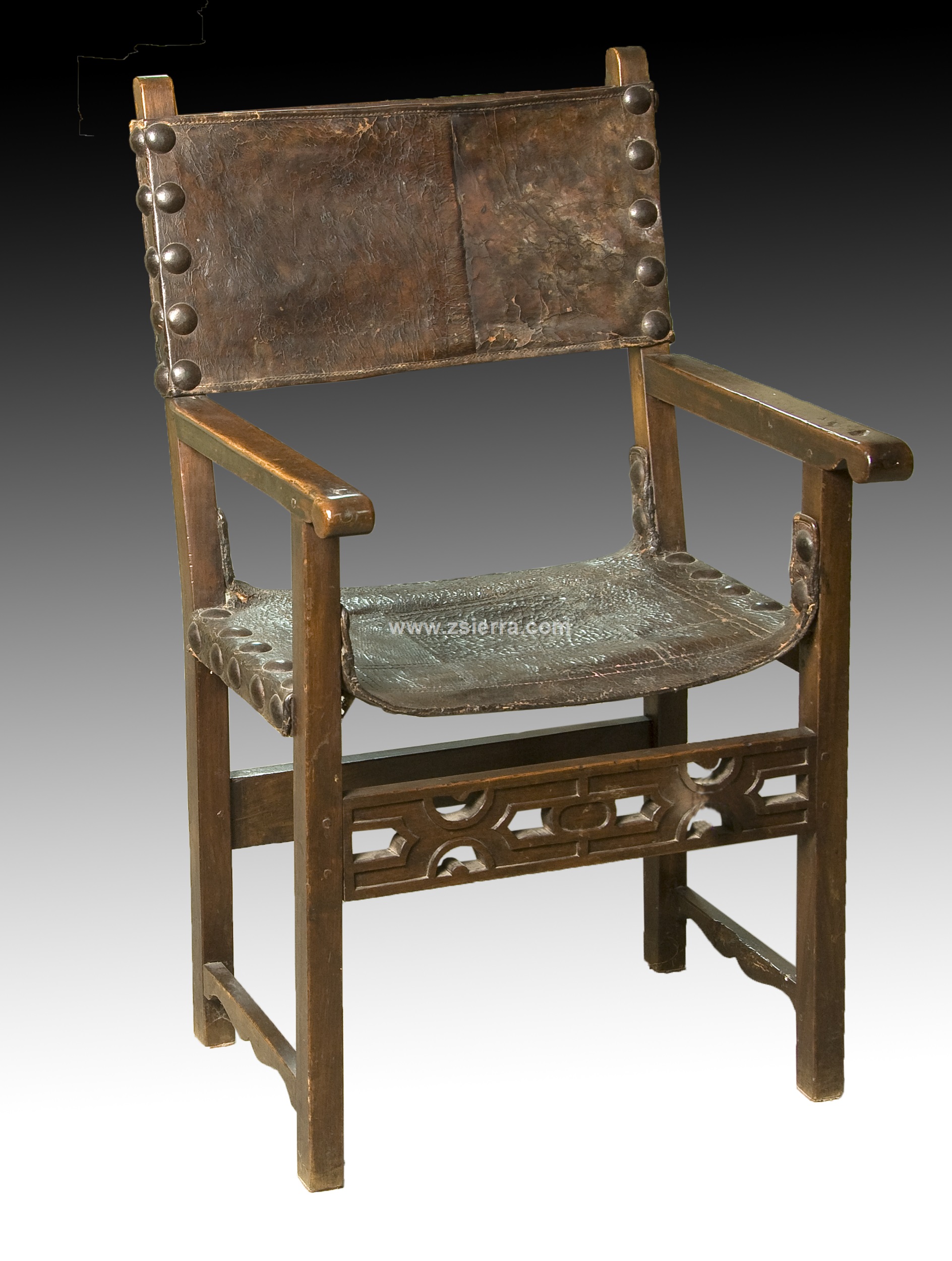
Benches were also very popular in spain, they were found everywhere and had trestle support, usually wood, and had scrolled wrought-iron under brace.


Vargueno cabinetwork was spain's most distinctive cabinetwork. It was deigned as a receptacle for documents and valuables. Could be used as a desk and early designs in the moorish or mudejar styles. Ivory was often painted in bright red, blue, green, and gold for the stand and the bases were puente and taquillon. The puente was elaborately carved table trestle with the sides being pulled out to support the drop-front. The traquillon was a facade in four sections including drawers and a cupboard.


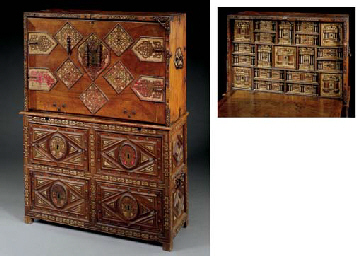
Tables and chests wer important pieces within the homes at this time. The tables usually were made from wrought iron and were thick an massive with movable tops.

The chests were the most important and necessary piece of a home. There was inlay of bone and ivory with some being coverers in leather or fabric.

Here are some modern day interiors that display spanish detail and style:


Below is a youtube video displaying architecture, motifs, and interior design during the spanish renaissance:
https://www.youtube.com/watch?v=TqUKkpUjh4o
One of the last spanish palaces that was completed before the expulsion of the moors was Alhambra, Granada 1354. This was a supreme achievement of moorish architecture and decoration. The exterior was plain and it had numerous courtyards with gardens, fountains, and reflecting pools.

.jpg)

.jpg)
Another beautiful place during this time was the Cathedral of seville. This cathedral was located in seville, andalusia spain. It was the largest cathedral in the world in the 15th century. The style was gothic and was larger than hagia sophia. This cathedral also demonstrated the cities wealth and included 80 chapels that required 500 masses daily.




Another huge site during this era was el escorial. It was 30 miles north west of spain in the 16th century. Its massive structure was known for its simplicity, sobriety, and plainness. It was a highly moral building and a royal palace for monarchy.



Furniture was bold and simple with heavy proportions. Walnut wood was common and silver was used for ornamentation. Rectangular shapes were preferred with crude carvings. One of the most famous chairs from this era was the sill on de frailero(monk's chair). It was a walnut armchair with a leather seat and back and a broad front stretcher with decorative nailheads.

Benches were also very popular in spain, they were found everywhere and had trestle support, usually wood, and had scrolled wrought-iron under brace.


Vargueno cabinetwork was spain's most distinctive cabinetwork. It was deigned as a receptacle for documents and valuables. Could be used as a desk and early designs in the moorish or mudejar styles. Ivory was often painted in bright red, blue, green, and gold for the stand and the bases were puente and taquillon. The puente was elaborately carved table trestle with the sides being pulled out to support the drop-front. The traquillon was a facade in four sections including drawers and a cupboard.



Tables and chests wer important pieces within the homes at this time. The tables usually were made from wrought iron and were thick an massive with movable tops.

The chests were the most important and necessary piece of a home. There was inlay of bone and ivory with some being coverers in leather or fabric.

Here are some modern day interiors that display spanish detail and style:

Below is a youtube video displaying architecture, motifs, and interior design during the spanish renaissance:
https://www.youtube.com/watch?v=TqUKkpUjh4o
Saturday, March 7, 2015
Italian Renaissance peer reviews
Samantha: I really enjoyed the video you provided on your blog as well as the current applications you selected. Very informative blog!
Kari: Your blog had great explanations of all the material we went over plus more. I also really like the modern applications you selected, especially the one of Millennium Bitmore hotel in Los Angeles.
Kari: Your blog had great explanations of all the material we went over plus more. I also really like the modern applications you selected, especially the one of Millennium Bitmore hotel in Los Angeles.
Italian Renaissance
The word Renaissance means "rebirth" beginning in Florence Italy. The classical forms refined and adapted for new uses and local quarries offered an endless supply of beautiful marble. The furnish interiors during this time were of Gothic and Romanesque. There was a huge shift from a religious to a secular emphasis. The Roman Catholic church had become very powerful involving corruption and misconduct. There was a movement towards humanism and everyone in Italy, rich or poor, was interested in the arts. Residential design becomes popular as well as comfort convenience and beauty rather than strength safety and protection. There was also emphasis on horizontal and symmetry but copied designs from excavations. Ancient Roman style and details added to buildings medieval in concept. There was also an early emphasis on the interior architecture not the furniture. Lastly, the Italian Renaissance included elaborate fireplaces, decorative moldings, doors, and ceilings.
 One of the finest achievements of the Italian Renaissance was the Italian Renaissance palace(palazzo). This building had three divisions with compound windows and a heavy project cornice. The central courtyard was like the roman domus, there was no hallways, and there were people living on the second and third floors. The walls were pierced with niches and the living space was similar to the r
One of the finest achievements of the Italian Renaissance was the Italian Renaissance palace(palazzo). This building had three divisions with compound windows and a heavy project cornice. The central courtyard was like the roman domus, there was no hallways, and there were people living on the second and third floors. The walls were pierced with niches and the living space was similar to the r
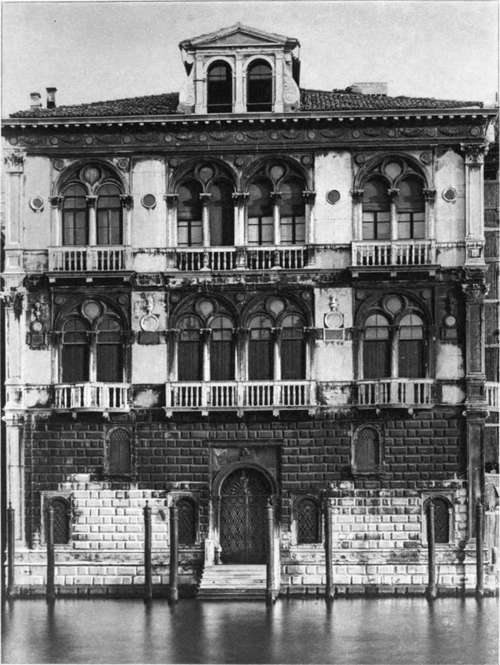
oman "insula." The ground floor had repair shops, summer apartments, kitchens, bathrooms, and storage. There was also a grand staircase to the piano mobile which was on the second floor of the main living area.
Two other magnificent buildings during the Italian Renaissance were the palazzo farnese and the palazzo davanzati. The interiors of the palazzo davanzati consisted of frescos, tapestries, and fireplaces all centered around the interior courtyard. The palazzo farnese was completed by Michelangelo and it look like a massive rectangular block that included a courtyard, ground floor, second story, and third story.


Another amazing building during this time was the Villa Rotonda designed by Andrea Palladio. Each side has a classical temple front including: stairs, six columns, entablature and pediment. The rooms were arranged symmetrically around the dome.


Leonardo Da Vinci was the most diversely gifted person of all time. His most well known pieces of art were the last supper and the Mona lisa.
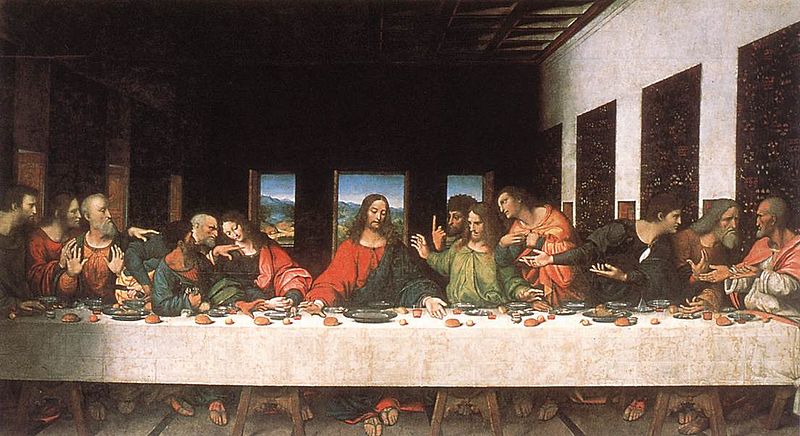

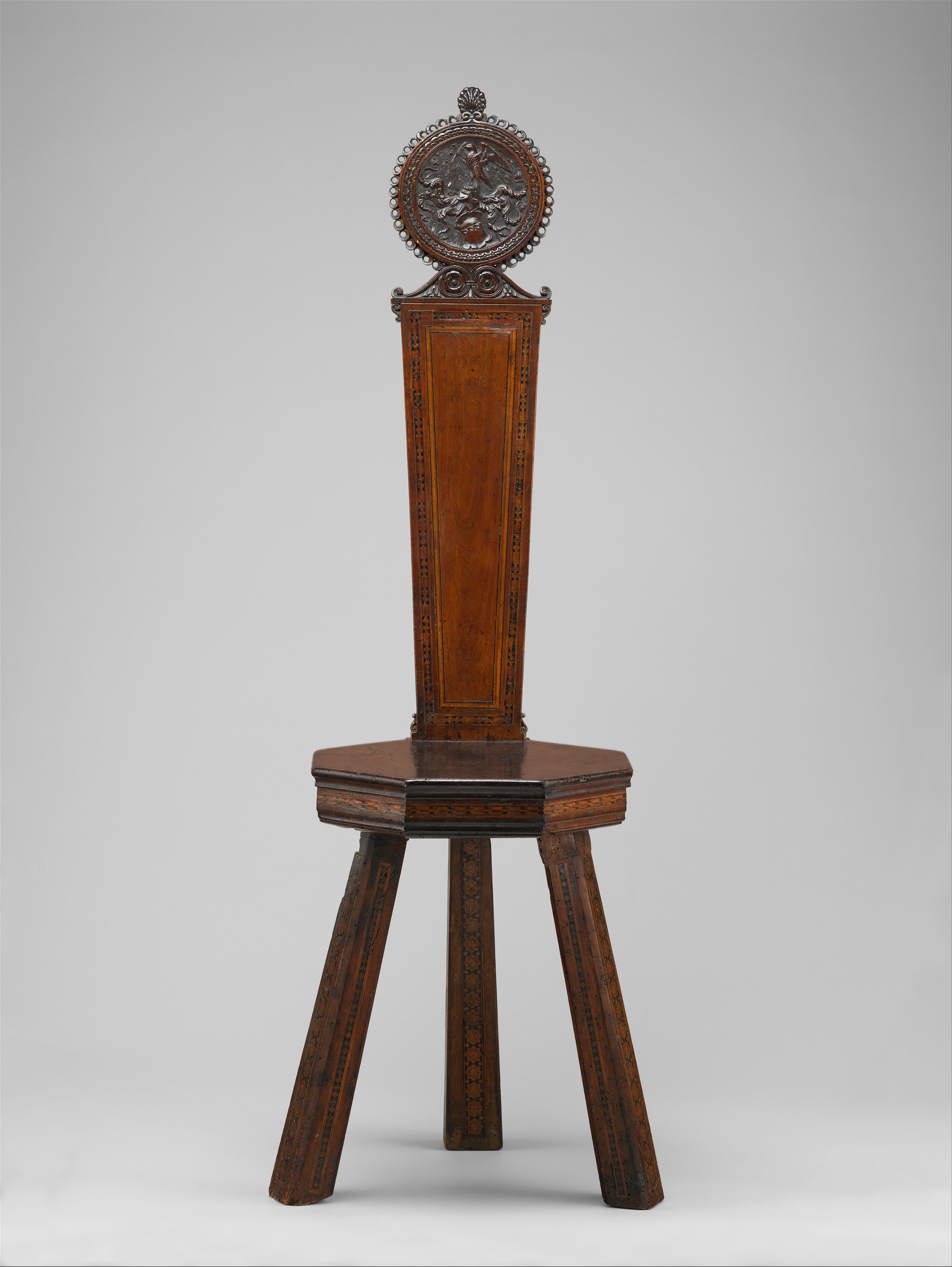
This chair was called the sgabello(stool with a back). It had a small octagonal or rectangular seat supported but here legs. It was primarily for dining and all purpose style.
Another chair during this time was known as the Dante chair. It had an x in the front and in the back was separated by floor stretchers and arms. The back and seat are made of leather with a loose fringed and tasseled cushion.


Cassapanca
Here are some current applications of interiors


Below is a video on the famous Leonardo Da Vinci:
https://www.youtube.com/watch?v=PwOlIGGDVjE
 One of the finest achievements of the Italian Renaissance was the Italian Renaissance palace(palazzo). This building had three divisions with compound windows and a heavy project cornice. The central courtyard was like the roman domus, there was no hallways, and there were people living on the second and third floors. The walls were pierced with niches and the living space was similar to the r
One of the finest achievements of the Italian Renaissance was the Italian Renaissance palace(palazzo). This building had three divisions with compound windows and a heavy project cornice. The central courtyard was like the roman domus, there was no hallways, and there were people living on the second and third floors. The walls were pierced with niches and the living space was similar to the r
oman "insula." The ground floor had repair shops, summer apartments, kitchens, bathrooms, and storage. There was also a grand staircase to the piano mobile which was on the second floor of the main living area.
Two other magnificent buildings during the Italian Renaissance were the palazzo farnese and the palazzo davanzati. The interiors of the palazzo davanzati consisted of frescos, tapestries, and fireplaces all centered around the interior courtyard. The palazzo farnese was completed by Michelangelo and it look like a massive rectangular block that included a courtyard, ground floor, second story, and third story.


Another amazing building during this time was the Villa Rotonda designed by Andrea Palladio. Each side has a classical temple front including: stairs, six columns, entablature and pediment. The rooms were arranged symmetrically around the dome.


Leonardo Da Vinci was the most diversely gifted person of all time. His most well known pieces of art were the last supper and the Mona lisa.



This chair was called the sgabello(stool with a back). It had a small octagonal or rectangular seat supported but here legs. It was primarily for dining and all purpose style.
Another chair during this time was known as the Dante chair. It had an x in the front and in the back was separated by floor stretchers and arms. The back and seat are made of leather with a loose fringed and tasseled cushion.


Cassapanca
Here are some current applications of interiors


Below is a video on the famous Leonardo Da Vinci:
https://www.youtube.com/watch?v=PwOlIGGDVjE
Friday, February 27, 2015
The Americas Peer Review
Samantha: The information you provided in your blog was very informative and clear. I learned some new facts based upon your blog. Also, I enjoyed your video you chose considering in provided one with further information on mayan architecture.
Tara: I liked the images you chose to demonstrate the Olmecs style. Those huge heads were so heavy I cannot believe they each weighed 40-50 tons! Also, I enjoyed the image you selected for the building for your modern application, the architecture was interesting.
Tara: I liked the images you chose to demonstrate the Olmecs style. Those huge heads were so heavy I cannot believe they each weighed 40-50 tons! Also, I enjoyed the image you selected for the building for your modern application, the architecture was interesting.
Thursday, February 26, 2015
The Americas
The coming together of the Americas consisted of four ancient civilizations known as the Olmecs, Mayans-Toltecs, the Aztecs, and the Incas. The cultures focused on nobles and commoners, divine rights, farming, sporting events, and hereditary leadership. Religion was a big factor, the people had ceremonial centers, which were the nuclei of Mesoamerican settlement. The temples provided spatial orientation for the town, and the pyramids were meant to stand out and represent the gods and powers of the region. Human sacrifice was also a very big part of the culture.
The Olmecs were the first major civilization in Mexico. There were called the "people of the rubber country," and they developed hieroglyphic writing. They also invented the first calendar of the Western hemisphere. They included realistic artwork throughout their design and accented with a lot of jade. A famous site built by these people is known as La Venta. This was the first example of the temple focused city type. The ceremony center composed of: the great pyramid of earth,ball court, smaller pyramids, burial grounds and giant stone heads.
These giant stone heads that were within this site weighed between 40-50 tons!
Another magnificent architectural site was known an Teotihuacan, "Place of the gods." There was a ceremonial center that ran two miles in length, with a central spine known as the "road of the dead." There was also a temple of the feathered serpent and the pyramid of the sun and one as well for the moon. The city was laid out in a grid form and there were not walls around the site to show a sign of a powerful society without enemies.
The Mayans were the second civilization to come about in the years from 300B.C.-1521 A.D. This society for 1,800 years nut were later destroyed by the spanish conquest of 1519. This area occupied highlands and the lowlands. Chichen Itza was the architectural site built by the Mayans and this ceremonial site on particular meant "mouth of the well of the Itza." included with a four sided pyramid called "Castillo." There was also a chacmool (ritualistic furniture) and jaguar throne within the site.
The Aztecs were the third civilization to be discovered. They used a creation of art expression through thoughts on life. The architecture expressed thoughts and beliefs accompanied by floating gardens. The civilization rivaled Rome and the population grew from 500,000 to over 3 million until it was conquered by Spain in 1520. An architectural site built by the Aztecs known as the Templo Mayor.
Templo Mayor

Another part of the Aztecs culture was their brilliant idea for agricultural systems. They were called Chinampas which were raised gardening beds located in swamps or shallow lakes. They may have been the most productive agricultural design ever developed by humans, and the growers were able to get up to 7 harvests per year from a single bed.
The last civilization were known as the Incas, which was the largest empire in Pre-Columbia America. They were known for their architecture and was located on the pacific coast and moutons. There was a lot of climate variations in this area and it was the capital of Cuzco. They were also the masters of stone cutting and used a lot of trapezoid shapes within their designs.
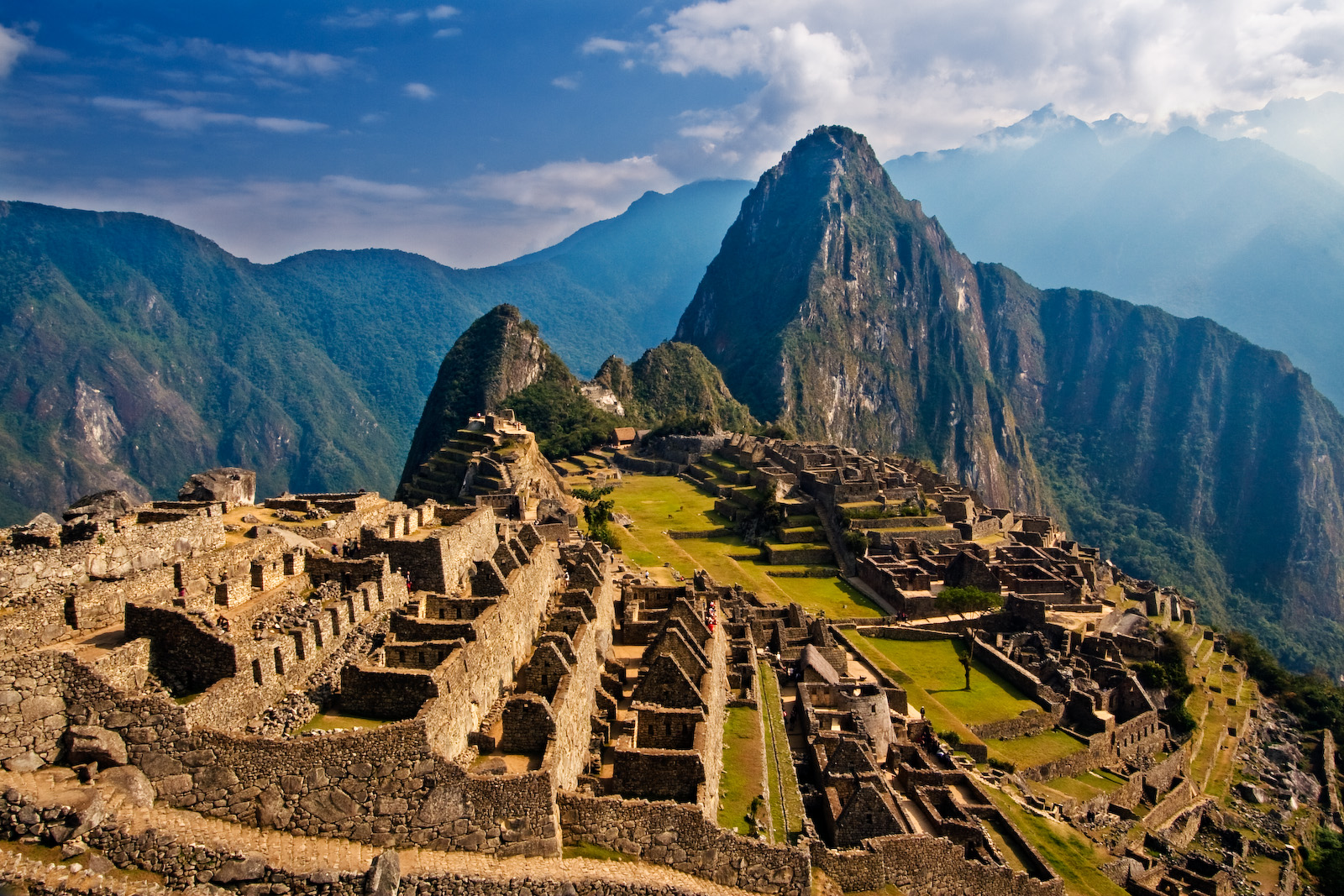
This architectural site that was built in this time was known as Machu Picchu. it was located in a seismically unstable area and was built without mortar. It was a royal estate for the Incan emperor Pachacuti with trapezoid openings. This was never discovered by the Spanish but was later discovered in 1911 by the American professor Bingham.
The Olmecs were the first major civilization in Mexico. There were called the "people of the rubber country," and they developed hieroglyphic writing. They also invented the first calendar of the Western hemisphere. They included realistic artwork throughout their design and accented with a lot of jade. A famous site built by these people is known as La Venta. This was the first example of the temple focused city type. The ceremony center composed of: the great pyramid of earth,ball court, smaller pyramids, burial grounds and giant stone heads.
These giant stone heads that were within this site weighed between 40-50 tons!
Another magnificent architectural site was known an Teotihuacan, "Place of the gods." There was a ceremonial center that ran two miles in length, with a central spine known as the "road of the dead." There was also a temple of the feathered serpent and the pyramid of the sun and one as well for the moon. The city was laid out in a grid form and there were not walls around the site to show a sign of a powerful society without enemies.
The Mayans were the second civilization to come about in the years from 300B.C.-1521 A.D. This society for 1,800 years nut were later destroyed by the spanish conquest of 1519. This area occupied highlands and the lowlands. Chichen Itza was the architectural site built by the Mayans and this ceremonial site on particular meant "mouth of the well of the Itza." included with a four sided pyramid called "Castillo." There was also a chacmool (ritualistic furniture) and jaguar throne within the site.
The Aztecs were the third civilization to be discovered. They used a creation of art expression through thoughts on life. The architecture expressed thoughts and beliefs accompanied by floating gardens. The civilization rivaled Rome and the population grew from 500,000 to over 3 million until it was conquered by Spain in 1520. An architectural site built by the Aztecs known as the Templo Mayor.

Templo Mayor

Another part of the Aztecs culture was their brilliant idea for agricultural systems. They were called Chinampas which were raised gardening beds located in swamps or shallow lakes. They may have been the most productive agricultural design ever developed by humans, and the growers were able to get up to 7 harvests per year from a single bed.
The last civilization were known as the Incas, which was the largest empire in Pre-Columbia America. They were known for their architecture and was located on the pacific coast and moutons. There was a lot of climate variations in this area and it was the capital of Cuzco. They were also the masters of stone cutting and used a lot of trapezoid shapes within their designs.

This architectural site that was built in this time was known as Machu Picchu. it was located in a seismically unstable area and was built without mortar. It was a royal estate for the Incan emperor Pachacuti with trapezoid openings. This was never discovered by the Spanish but was later discovered in 1911 by the American professor Bingham.
Subscribe to:
Comments (Atom)










